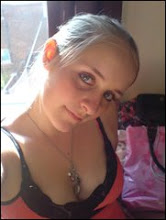 Taxi Driver
Taxi DriverUSA 1976 Martin Scorsese
Sound - dramatic sounds to thrill the spectator, to excite them. Then turns into Jazz music, peaceful & relaxing. The way the film is made suggests that the men may be drunk or confused, tired maybe? Suggesting a long journey or maybe just a long journey through his life. Dark lighting suggests tension, where as everywhere else natural day light is used.
Sound is also used before you see the person in the next shot, this is called nonsimultaneous sound. Where you hear something before it happens in the next scene. For example, when you hear someone talking, you dont see them it doesn't match the scene then it cuts into the next shot.
Narrative speaking over the shot is used quite alot in this film.
Sound in the background is always music sounds, as i find that different music syncs in to be different emotions of the different characters in the film. I think that there is a dominant feel to the music. He seems to be wanting to work long hours, maybe suggesting that he wants to forget his past. Split- personality. He notices people of the street, mutters under his breath things about them. Calling them names. Direct sound dialogue over the scene. When he was trying to get the job- there was off scene sound, might suggest he is paranoid. As he can still hear everything going on around him.
Insomnia - 2002 - USA - Christopher Nolan

Use of sound - tension in the music, dramatic feel to it. Even before anything appears on the screen. The sound of the music feels like someone has died, or is going to die later on in the film. That maybe an upsetting is about to occur. Builds up tension. Then the scene comes in and i already assumme that someone has either died or going to died. It is a investigation of a crime scene of a murder of a young woman.Trying to find out what really happened. Sadness in the tone of the voice. Not much use of voices to suggest that this case is very important or alot is going to happen in the film to investigate the murder.
Scream - 1996 - Craven - USA
Dramatic - Horror - Music - Screaming - Phone Rings.
Then she answers the phone then a guy with a voice to scare the audience is heard on the other end of the phone. The music is really high pitched to suggest death, maybe a scream? Heartbeat of the girl is placed into the music, to make the spectator jump. Every moment of her moving around seemed over-exaggerated, really loud. Louder than normal.
Dog barking in the background, louder than usual so maybe this is a different character hearing the dog not the main character, as it wouldn't be so loud. Suggests someone is outside but then the dog stops barking so maybe the other character killed the dog, to stop alerting other neighbours. False plato is also used to create suspence, these effect was used in North by Northwest by alfred hitchcock to create suspension and then when you didn't expect it something would happen to scare the spectator.
Eternal Sunshine Of The Spotless Mind - USA - 2004 - Gondry
Music - Violins - Then stop. Little movement sounds - then car door shuts really loud. Suggesting he is just waking up as it seems muffled. Music hits in - piano to suggest lots of stress, maybe he can't deal with it anymore and wants to give up. Narrative dialogue - music still playing in the background for extra effect. His voice tells the story of his life. Faded voices, faded noises. Diegetic sounds.
The Graduate - 1967 - USA - Nichols
Music - Funky, kinda jazzy. Slows down, maybe suggesting that the car is breaking down. Diegetic sounds suggest that he has reached his destination, music starts slowly, beat after beat. Wedding music starts, silence. Some of the characters voices were muffled to suggest that the bride didn't want to listen to half the people that were shouting at her. Like she was old enough to make her own mistakes. Also this is used to suggest that they are in their own little world and they want to be there so they can't hear anything else apart from what they want to hear.



